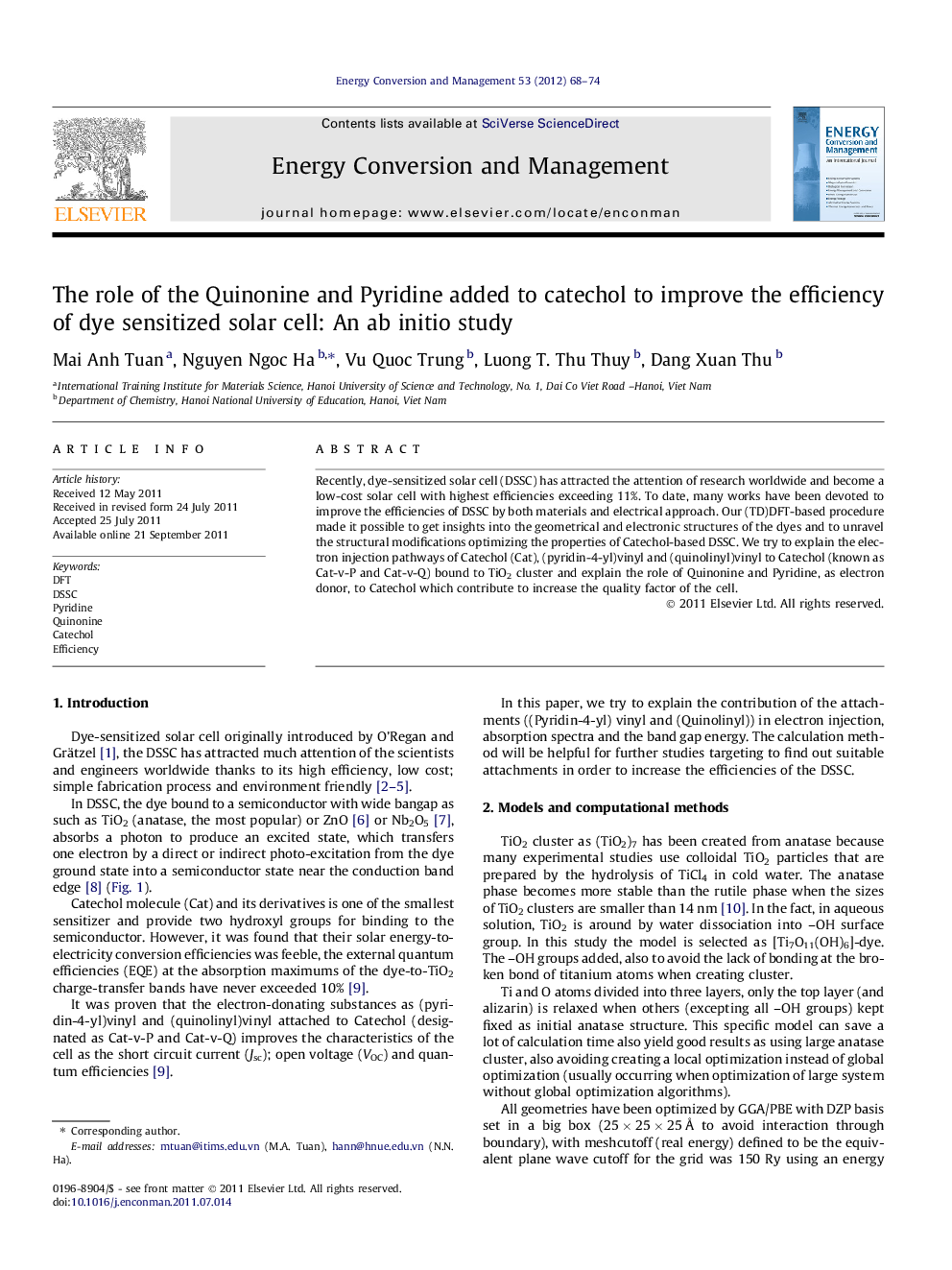| Article ID | Journal | Published Year | Pages | File Type |
|---|---|---|---|---|
| 764349 | Energy Conversion and Management | 2012 | 7 Pages |
Recently, dye-sensitized solar cell (DSSC) has attracted the attention of research worldwide and become a low-cost solar cell with highest efficiencies exceeding 11%. To date, many works have been devoted to improve the efficiencies of DSSC by both materials and electrical approach. Our (TD)DFT-based procedure made it possible to get insights into the geometrical and electronic structures of the dyes and to unravel the structural modifications optimizing the properties of Catechol-based DSSC. We try to explain the electron injection pathways of Catechol (Cat), (pyridin-4-yl)vinyl and (quinolinyl)vinyl to Catechol (known as Cat-v-P and Cat-v-Q) bound to TiO2 cluster and explain the role of Quinonine and Pyridine, as electron donor, to Catechol which contribute to increase the quality factor of the cell.
► Detailed mechanism of Dye-to-TiO2 charge-transfer (dye = Cat, Cat-v-P or Cat-v-Q). ► The efficiency of the electron transition can be improved by adding n-type donor. ► The donor should have conjugated structure for easy electron transfer.
